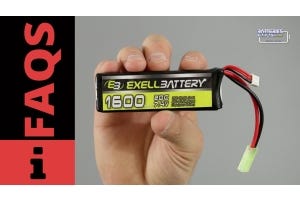Are Edible Batteries the Future of Bio-Medical Gadgets?


One of the iconic scenes from science fiction may be coming to a pharmacist in your near future, thanks to the ink of a cuttlefish. Current technology allows implantable electronic devices - insulin pumps and pacemakers are good examples - that have to be surgically implanted. Their power supplies are also optimized for energy density and are made up of lithium and potentially toxic catalysts or enzymatic components.
However, researchers at Carnegie Mellon University's Materials Science Research lab have made prototype edible batteries out of a pigment from cuttlefish ink on the anode with a manganese oxide cathode. All components are biologically safe and nontoxic in the body. While this technology is a long way from widespread commercialization - the energy density and amperage are quite low - the prospective battery opens up the potential of not just implantable devices, but ingestible ones as well.
Possible Uses
There are a range of medical devices that could, with an appropriate power source, give doctors an unprecedented view of the healing process. Edible batteries would enable brain and heart monitors smaller than we currently use, or provide real-time data on the intestinal tract that would be too invasive to get full data capture with conventional methods.
Beyond the diagnostic role, edible batteries may revolutionize treatments, being able to do computerized or sensor driven release of drugs into the bloodstream or digestive tract, or act as electrical stimulators for other devices.
The diagnostic devices are already in development at CMU, where researches have been working on "pill cameras" for the better part of a decade, but have always been stymied by the toxic electrolytes endemic to small battery technology. In the works are drugs that normally have to be injected rather than taken orally - a pill with a sensor, a power supply and the drug package could tell if it's passed the stomach before releasing the payload. Treatments targeted for this technique include arthritis drugs and certain liver drugs.
Other Uses
Smart sensor pills could be used to replace any number of sensor technologies, tracking blood oxygen and CO2 levels or core body temperatures. Both of these are very useful in the field of professional athletics and for the armed forces.
A smart pill mechanism that can linger in the intestines, monitor blood sugar levels, and dispense exactly the right dose of insulin would change diabetes from an injection-treatment to a daily pill.
It may even be possible to implant devices that can harvest these edible batteries, or tune the edible batteries to seek out the devices to be used. Being able to take a daily or weekly pill to keep a pacemaker charged would reduce stress on the body for the wearer.
Competing Technologies
Current state of the art in ingestible devices run the gamut from swallowable pill cameras that have to pass through the alimentary tract, to partial foil batteries that rely on stomach acid as their electrolyte, and have a short functional life within the body.
The prospect of a mature biologically sound edible battery opens up a lot potential for wound monitoring - scientists working in the field picture devices that are swallowed, use protein coding to find the wound, stay there, and dissolve when the wound heals and the sensor is no longer required.






